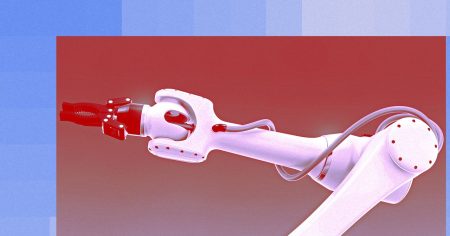Amir Elichai is the CEO of Carbyne, a New York-based software company that develops cloud-native emergency call management solutions.
It was a moment when people could hear a pin drop, even in a virtual conference.
As a 9-1-1 dispatcher from Stamford, Conn., spoke about the overwhelming stress she felt from her job—coping with the daily emergencies, the emotional and physical toll, and the thoughts of suicide that the stress had caused—the gravity of both her story and the reasons why people were gathered could be felt across the internet. It was just one of many stories told during a mid-summer web conference on 9-1-1, sponsored by my company and NENA: The 9-1-1 Association, which brought to light how America’s overstretched 9-1-1 system is crying out for change.
The stories were compelling and touched on both human problems, like stressed-out emergency dispatchers, and technology problems, like the difficulty of operating without modern tech tools.
There is much discussion in the media these days about the impact of artificial intelligence (AI) on the way we work, learn and live. The technology is both exciting and suspicious. To be fair, though, new technologies always have been this way. Our challenge is harnessing technology for the benefit of all people.
Obviously, AI’s unique capabilities make this challenge a bit scarier. The ability of machines to process data and make autonomous decisions brings to life all the science fiction stories we’ve seen—the good and the bad.
Yet, the world that AI is opening should not be thought of as one dominated by the technology but rather complemented by it. More to the point, instead of seeing AI as artificial intelligence, it should be viewed as assistive intelligence.
My expertise is in using AI to enhance emergency communications, but the same lessons apply in all fields.
Seeing Human Need For Tech Assistance
To dig a little deeper, my company’s survey on the state of 9-1-1 found that 82% of emergency call centers reported being understaffed and struggling with hiring and retention, with a growing gap between those retiring or leaving and younger staff to replace them. Additionally, 74% of respondents revealed that their 9-1-1 centers are plagued by staff burnout, with many others exhibiting mental health warning signs, such as anxiety, fatigue and low energy levels.
While this was one of the first surveys of the industry to go as in-depth as it did, looking at individual needs, as well as operational ones, the findings were in line with other staffing reports, showing a overstretched staff trying to respond to an ever-growing demand for services and help.
From large emergency call centers serving major metro areas to medium-sized suburban and smalltown rural agencies, the same story came up again and again: stress and low pay is hurting staffing levels and morale, and outdated technology is compounding the problems, with more capabilities readily available but challenging for local governments to procure and deploy.
While technology can obviously be a solution to many of these challenges, it’s only effective when seen in the context of a human solution.
In the emergency response arena, AI can help staff manage call surges from a disaster scene by detecting the surge and then prioritize calls from people in the worst trouble, improving the emergency response while reducing stress on over-stretched 9-1-1 dispatchers. AI also can instantly detect language and automatically translate for both the caller and 9-1-1 call responder.
Assistive intelligence can even help a call center’s manager identify a staff member’s rising stress levels by analyzing speech patterns and cadence, enabling timely mental and wellness support for 9-1-1 staff before those stress levels manifest into something traumatic.
In other fields, the world is already filled with examples of how Assistive Intelligence is making—and can continue to make—the world a better place, from helping to diagnose and treat cancer, to spotting and catching human traffickers, to protecting our global environment and cybersecurity.
Helping Staff Welcome Assistive Intelligence
Talk to any 9-1-1 professional about why they entered the profession, and the answers parallel those of other first responders, whether EMT, fire or police: They are helping people in their most stressful times of need.
Such help is not about efficiency nor automation. It’s about empathy and understanding.
Technology solutions always bring change, and for staff who are presented AI through an efficiency lens, what they hear may not be what leaders intend with new technological capabilities. As we’ve seen in many industries, implementing AI can elicit strong resistance.
However, the experience of implementing AI in 9-1-1 call centers shows how leaders can manage staff uncertainty. By focusing on the human element for technology assistance, staff can see how AI is designed to complement the service they provide instead of duplicating it. Showing AI’s value-add to their work, leaders can demystify AI’s purpose and demonstrate its ability to help staff feel more effective and satisfied in their day-to-day activities.
With AI, staff can focus on where their help and expertise are needed most. In 9-1-1, AI is not about doing more but rather about feeling more effective helping as many people as possible. Managing the workload, reducing stress and improving job satisfaction, AI’s capabilities are as much about staff well-being as it is about operations.
AI works because the intelligence is assistive, created and managed by humans to help other humans cope better with their toughest problems.
When we see AI through that lens, we can see how our technological advances are about improving what people do and how they do it. That’s not artificial. It’s very human.
Forbes Business Council is the foremost growth and networking organization for business owners and leaders. Do I qualify?
Read the full article here










